Today Current Affairs: 19th January 2022 for UPSC IAS exams, State PSC exams, SSC CGL, State SSC, RRB, Railways, Banking Exam & IBPS, etc
Table of Contents
Domestic Hazardous Waste:

Segregation of domestic hazardous waste remains a distant dream for most Indian cities in absence of robust framework and infrastructure.
- Indore is the only city in the country that safely handles its domestic hazardous waste.
- Domestic Hazardous Waste is any chemical or product that can cause serious illness or pose an environmental or health threat if improperly stored, transported or disposed of.
- When hazardous waste is disposed of in the trash, down the drain, or on the ground, our water and soils can be contaminated or trash collectors can be harmed.
- Most products labeled dangerous, flammable, poison, combustible and corrosive are considered hazardous waste.
- Examples: Auto batteries, Fertilizers, Batteries (non-alkaline), Paint.
- In 2020, a significant level of toxic heavy metals and persistent organic contaminants like pesticides have been found by the researchers from the Indian Institute of Technology (IIT) Delhi and IIT Bombay.
- They analysed fine particles from eight dump sites across the country.
- Household waste is governed by the rules outlined in the Solid Waste Management Rules 2016.
- These rules divide household waste into dry and wet waste.
- Wet waste is categorised as any waste that decomposes or degrades by itself.
- All other waste falls into dry waste according to the rules.
Open Data Week:

The Ministry of Housing and Urban Affairs (MoHUA) has announced the initiation of the Open Data Week to encourage the adoption of open data and promote innovation across India’s urban ecosystem.
- It is being conducted during the third week of January, i.e., from 17th January 2022 to 21st January 2022.
- The idea is to provide a platform that offers ample opportunities on how to continue creating and promoting the use of data that addresses complex urban issues, such as the ongoing Covid-19 pandemic.
- Open data is data that can be freely used, re-used and redistributed by anyone – subject only, at most, to the requirement to attribute and share alike.
- It is easily available at a minimal cost. It should also be available in a usable form.
- It is made available without any restriction on re-use and redistribution.
- Anyone and everyone can access and/or re-use it.
- There should be no discrimination against a person or group based on any criteria.
Web 3.0:
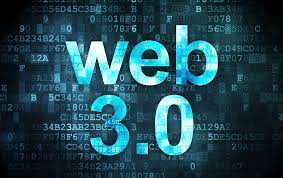
The concept of Web3, also called Web 3.0, used to describe a potential next phase of the internet, created quite a buzz in 2021.
- World Wide Web, which is also known as a Web, is a collection of websites or web pages stored in web servers and connected to local computers through the internet.
- These websites contain text pages, digital images, audios, videos, etc. Users can access the content of these sites from any part of the world over the internet using their devices such as computers, laptops, cell phones, etc.
- Web 3.0 is a decentralized internet to be run on blockchain technology, which would be different from the versions in use, Web 1.0 and Web 2.0.
- In Web3, users will have ownership stakes in platforms and applications unlike now where tech giants control the platforms.
- Gavin Wood, founder of Ethereum, a block chain technology company, used the term Web3 first in 2014 and in the past few years many others have added to the idea of Web3.
Web 1.0:
- Web 1.0 is the world wide web or the internet that was invented in 1989. It became popular from 1993. It lasted until 1999.
- The internet in the Web 1.0 days was mostly static web pages where users would go to a website and then read and interact with the static information.
- Even though there were e-commerce websites in the initial days it was still a closed environment and the users themselves could not create any content or post reviews on the internet.
Web 2.0:
- Web 2.0 started in some form in the late 1990s itself though 2004 was when most of its features were fully available. It is still the age of Web 2.0 now.
- The differentiating characteristic of Web 2.0 compared to Web 1.0 is that users can create content.
- They can interact and contribute in the form of comments, registering likes, sharing and uploading their photos or videos and perform other such activities.
- Primarily, a social media kind of interaction is the differentiating trait of Web 2.0.
- In Web 2.0, most of the data in the internet and the internet traffic are owned or handled by very few companies ex. Google.
- This has created issues related to data privacy, data security and abuse of such data.
- There is a sense of disappointment that the original purpose of the internet has been distorted.
National Technical Textiles Mission:

The Ministry of Textiles cleared 20 strategic research projects worth Rs 30 crores in the areas of Specialty fibers and Geotextiles under the Programme ‘National Technical Textiles Mission.’
- It was approved in 2020 by the Cabinet Committee on Economic Affairs (CCEA) with the aim to position the country as a global leader in technical textiles and increase the use of technical textiles in the domestic market.
- It aims at taking the domestic market size from USD 40 billion to USD 50 billion by 2024.
- A Mission Directorate is operational in the Ministry of Textiles.
- It will be implemented for four years starting from 2020-2021 and has four components-
- First component: It will focus on research, development and innovation with an outlay of Rs. 1,000 crores.
- The research will be at both fiber level and application-based in geo, agro, medical, sports and mobile textiles and development of biodegradable technical textiles.
- Research activities will also focus on the development of indigenous machinery and process equipment.
- Second component: It will be for the promotion and development of the market for technical textiles.
- Third component: It will focus on export promotion so that technical textile exports from the country reach from Rs 14,000 crores to Rs 20,000 crores by 2021-2022 and ensure 10% average growth every year till the Mission ends.
- An export promotion council for technical textiles will be set up.
- Fourth component: It will focus on education, training and skill development.
- The Mission will promote technical education at higher engineering and technology levels related to technical textiles and its application areas.
- First component: It will focus on research, development and innovation with an outlay of Rs. 1,000 crores.
Oxfam Report:
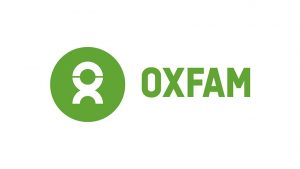
The Oxfam report titled “Inequality Kills’’ was released, the report pointed out a stark income divide worsened by the Covid pandemic, globally and in India.
- Magnitude of Growing Inequities: Widening economic, gender, and racial inequalities—as well as the inequality that exists between countries—are tearing our world apart.
- The wealth of the world’s 10 richest men has doubled since the pandemic began.
- The incomes of 99% of humanity are worse off because of Covid-19.
- Inequality contributes to the death of at least one person every four seconds.
- Economic Violence: A kind of economic violence is perpetrated when structural policy choices are made for the richest and most powerful people.
- This affects the poorest people, women and girls, and racialized groups most.
- Unequal Access to Healthcare: Healthcare of good quality is a human right, but is too often treated as a luxury for rich people.
- Gender-Based Violence: It is rooted in patriarchy and sexist economic systems. For example, sex-selective abortions.
- Poverty-Induced Hunger: Hunger is one of the ways in which poverty kills, and it is faced by billions of ordinary people all over the world each day.
- Inequality of Climate Change Crisis: The emissions of the richest people are driving this Climate Change crisis, with the CO2 emissions of 20 of the richest billionaires estimated on average to be 8,000 times that of the billion poorest people.
- Vaccine Apartheid: Rich countries may back their pharmaceutical monopoly billionaires and hoard vaccines to protect their populations, but in so doing they push their own people toward risk from the mutations that vaccine apartheid is creating.
- Vaccine apartheid as a concept calls attention to the effects of inequitable vaccine distribution policies on historically subordinated peoples.
Indian Scenario:
- A Covid continued to ravage India, the country’s healthcare budget saw a 10% decline from RE (Revised Estimates) of 2020-21.
- There was a 6% cut in allocation for education.
- The budgetary allocation for social security schemes declined from 1.5% of the total Union budget to 0.6%.
- According to the report, the income of 84% of households in the country declined in 2021, but at the same time, the number of Indian billionaires grew from 102 to 142.
- During the pandemic, the wealth of Indian billionaires increased from Rs 23.14 lakh crore to Rs 53.16 lakh crore.
- India has the third-highest number of billionaires in the world, just behind China and the United States.
- There is a 39% increase in the number of billionaires in India in 2021.
- More than 4.6 crore Indians are estimated to have fallen into extreme poverty in 2020. This is nearly half of the global new poor according to the United Nations.
- Also, in the same year, the share of the bottom 50% of the population in national wealth was a mere 6%.
- The unemployment in India has also increased.
- Women collectively lost Rs 59.11 lakh crore in earnings in 2020, with 1.3 crores fewer women in work now than in 2019.
- Lowering corporate taxes from 30% to 22% to attract investment last year (2020) resulted in a loss of Rs 1.5 lakh crore, which contributed to the increase in India’s fiscal deficit.
- Despite the country’s federal structure, the revenue resources remained concentrated in the Centre’s hands.
- However, the management of the pandemic was left to the states – who were not equipped to handle it with its financial or human resources.
Har Gobind Khorana:100th Birth Anniversary

The 100th birth anniversary of the biochemist and chemical biologist Har Gobind Khorana was observed.
About Har Gobind Khorana:
- Born inJanuary 9, 1922, Raipur, India [now Raipur, Pakistan
- He began research on nucleic acids during a fellowship at the University of Cambridge (1951) under Sir Alexander Todd.
- He made another contribution to genetics in 1970 when he and his research team were able to synthesize the first artificial copy of a yeast gene.
- His later research explored the molecular mechanisms underlying the cell signalling pathways of vision in vertebrates.
- His studies were concerned primarily with the structure and function of rhodopsin, a light-sensitive protein found in the retina of the vertebrate eye.
- He also investigated mutations in rhodopsin that are associated with retinitis pigmentosa, which causes night blindness.
- He shared the 1968 Nobel Prize for Physiology or Medicine with Marshall W. Nirenberg and Robert W. Holley for research that helped to show how the nucleotides in nucleic acids, which carry the genetic code of the cell, control the cell’s synthesis of proteins.
- In addition to the Nobel Prize, Khorana received the Albert Lasker Basic Medical Research Award (1968) and the National Medal of Science (1987).
- The Indian government awarded Khorana the Padma Vibhushan in 1969.
China’s Space Station:

As China gears up to become the only country to have an exclusive and probably the only space station by 2024 or latest by 2030, its neighbor, India too has plans to follow suit in a few years.
- Recently, the Union Minister for Space Jitendra Singh announced in Parliament that India’s first space station would be set up by 2030.
- Even though the retirement of the ISS is currently scheduled for 2024, NASA and the international partners have indicated that the ISS’s operational life could be extended to 2030.
China’s Space Station:
- The new multi-module Tiangong station is set to be operational for at least 10 years.
- The space station will operate in low-Earth orbit at an altitude of 340-450 km above Earth’s surface.
- The low orbit space station would be the country’s eye from the sky, providing round the clock bird’s-eye view for its astronauts on the rest of the world.
- It shall aid China’s aim to become a major space power by 2030.
- China’s space station will be equipped with a robotic-arm over which the US has raised concerns for its possible military applications.
- The Concern is that this technology “could be used in a future system for grappling other satellites”.
Indian Space Station:
- The Indian space station will be much smaller (mass of 20 tonnes) than the International Space Station and will be used for carrying out microgravity experiments (not for space tourism).
- Preliminary plan for the space station is to accommodate astronauts for up to 20 days in space, and the project will be an extension of the Gaganyaan mission.
- It will orbit Earth at an altitude of around 400km.
- ISRO (Indian Space Research Organisation) is working on a space docking experiment (Spadex), a technology that is crucial for making the space station functional.
Organization Of Islamic Cooperation:
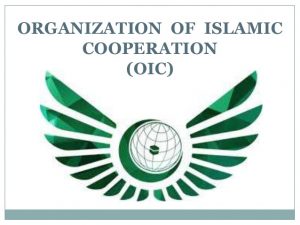
After years, Iran diplomats return to Saudi Arabia to take up posts in Islamic forum.
- Arrival of Iranian delegation to Organization of Islamic Cooperation marks first such diplomatic move between Tehran, Riyadh since ties cut in 2016.
- In 2016, protesters attacked Saudi diplomatic missions in Iran after the kingdom executed revered Shiite cleric Nimr al-Nimr.
- Riyadh responded at the time by cutting ties with Tehran, while OIC foreign ministers condemned the violence.
About OIC:
- It is an international organization founded in 1969, consisting of 57 member states.
- It is the second largest inter-governmental organization after the United Nations.
- The organisation states that it is “the collective voice of the Muslim world” and works to “safeguard and protect the interests of the Muslim world in the spirit of promoting international peace and harmony “.
- The OIC has permanent delegations to the United Nations and the European Union.
- Permanent Secretariat is in Jeddah, Saudi Arabia.
- OIC’s growing economic and energy interdependence with India has become important in recent times.
Undersea Volcanic Eruption : Tonga
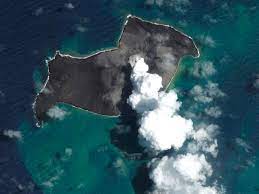
A volcano erupted in the southern Pacific Island of Tonga, which triggered Tsunami waves around the Pacific.
- It is an Undersea Volcanic Eruption consisting of two small uninhabited islands, Hunga-Ha’apai and Hunga-Tonga.
- The Tonga Islands occur along the Ring of Fire—a perimeter of heightened volcanic and seismic activity that encircles the Pacific Ocean basin.
- The Ring of Fire is a Pacific region home to over 450 volcanoes, including three of the world’s four most active volcanoes – Mount St. Helens in the USA, Mount Fuji in Japan and Mount Pinatubo in the Philippines. It is also sometimes called the circum-Pacific belt.
- Around 90% of the world’s earthquakes occur in the Ring of Fire, and 80% of the world’s largest earthquakes.
- It stretches along the Pacific Ocean coastlines, where the Pacific Plate grinds against other, smaller tectonic plates that form the Earth’s crust – such as the Philippine Sea plate and the Cocos and Nazca Plates that line the edge of the Pacific Ocean.
- The 40,000 kilometre horse-shoe-shaped ring loops from New Zealand to Chile, passing through the coasts of Asia and the Americas on the way.
- The Ring of Fire is the result from subduction of oceanic tectonic plates beneath lighter continental plates.
- The area where these tectonic plates meet is called a subduction zone.
State Of The World Special Address: World Economic Forum
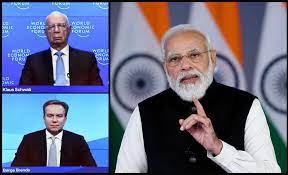
The Prime Minister Narendra Modi delivered ‘State of the World’ special address at the World Economic Forum’s Davos Agenda.
- The Prime Minister said that today, India is providing record number of software engineers. More than 50 lakh software developers are working in India.
- As compared to mere 100 start-ups in 2014, India has more than 60 thousand start-ups today. Out of which 80 are unicorns and more than 40 unicorns emerged in 2021 itself.
- He also talked about the India’s huge, safe and successful digital payments platform and informed that in the last month itself more than 4.4 billion transections took place through Unified Payments Interface.
- India has deregulated areas like Drones, Space, Geo-spatial mapping and has brought reforms in the outdated telecom regulation related with the IT and BPO sectors.
The Davos Agenda 2022
- The Davos Agenda virtual event offers the first global platform of 2022 for world leaders to come together to share their visions for the year ahead.
- The week long virtual event, taking place on the World Economic Forum website and social media channels 17-21 January 2022, will feature heads of state and government, CEOs and other leaders.
New Rehabilitation & Resettlement Policy:
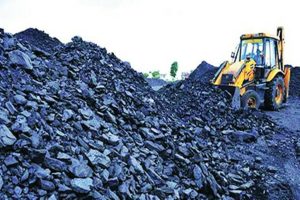
Union Minister of Coal Pralhad Joshi said that NLC India Ltd, a Navratna public sector enterprise under the Ministry of Coal has been playing a pivotal role in ensuring India’s energy security during the last six decades of performance.
- The Minister was virtually launching the new rehabilitation & resettlement (R& R) policy applicable to land owners of NLCIL mines area.
- Lauding the efforts of NLCIL and Tamil Nadu Government in framing a very flexible rehabilitation policy with multiple options available to the affected people, Minister Shri Joshi ensured that compensation to the affected villagers will be based on fair and transparent process.
- The new policy has provisions for enhanced amenities to project effected families. NLCL has signed an MOU with Tamil Nadu government to impart skill development to the youth under Skill India Mission.
- NLCIL commenced its operations in Tamil Nadu way back in 1956 in lignite mining and lignite based power generation.
- Over a period of more than six decades, the company has diversified into coal based Power Generation, Renewable Power Primarily Solar and Coal Mining.
- In this process, the Company has made PAN India presence with 50.60 MTPA mining and 6,061 MW power generating capacity.
Centre For Skill Development, Rehabilitation & Empowerment Of Persons With Disabilities (CRC), Kozhikode:
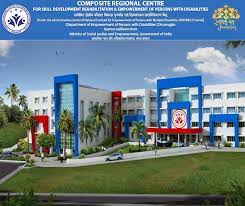
Department of Empowerment of Persons with Disabilities (Divyangjan) (DEPwD) is going to launch its first bi-monthly E-Newsletter during the inauguration of main building of Composite Regional Centre for Skill Development, Rehabilitation & Empowerment of Persons with Disabilities (CRC), Kozhikode on 18th January, 2022.
- The function is being organized at CRC Campus at Chevayur, Kozhikode, Kerala.
- CRC in Kozhikode was established in 2012 by the Ministry of Social Justice and Empowerment, Government of India under the administrative control of National Institute for Empowerment of Persons with Multiple Disabilities (NIEPMD), Chennai (an autonomous Institute under the administrative control of DEPwD) as its outreach/ extension centre.
- At present, the services of the Centre are being operated from rented building with a total area of 5000 sq ft of space with 12 rooms available for services.
- Government of Kerala has allotted 3 acres of land at Chevayur, Kozhike in 2013 for establishment of CRC.
- This newly constructed building of CRC Kozhikode is a 48,000 sq. ft. structure, built at a cost of around 20 crores.
Great Resignation:

In 2020, resignation rates across the US plummeted due to the fear and uncertainty caused by the pandemic.
- However, one year later, as the workforce experienced a collective burnout, individuals left their jobs at unprecedented rates, leading some to describe the phenomenon as the Great Resignation.
- In November 2021, 4.5 million workers left their jobs according to the US Labor Department. This matched record numbers observed in September and accounted for 3 per cent of the workforce quitting their jobs each month.
- Estimates indicate that in total, 75.5 million people in America resigned in 2021.
- Low-wage workers were more likely to resign than their higher-paid counterparts with the sectors most affected including hospitality, healthcare and social assistance, and transportation, warehousing, and utilities.
- The Great Resignation has largely been fuelled by burnout, but other factors also include the shift to working from home and the desire to move into a more stable profession.
- In light of these resignations, the labour market has incentivised companies to offer better benefits and higher salaries.
- In India, the situation is not as dire but still cause for concern. Following the Great Resignation, the IT and technology sector is hiring at unprecedented rates with the top five IT companies hiring around 1.7 lakh people in 2021.
- Not only are people in the workforce changing jobs, but according to a September 2021 survey by Amazon India, nearly 51 per cent of job seekers are looking for opportunities in industries where they have little to no experience.
Republic Day Tableaux:
West Bengal Chief Minister Mamata Banerjee wrote to Prime Minister Narendra Modi saying that she was “profoundly shocked” as West Bengal’s tableau for the Republic Day parade “was rejected without assigning any reasons or justifications.”
- She mentioned in her letter that the tableau was set to commemorate the contributions of Netaji Subhas Chandra Bose and his INA on his 125th birth anniversary year.
- According to sources there will be 21 tableaux in the parade, with 12 from states and Union Territories and nine departments under the Central Government or independent institutions have made the cut.
- West Bengal is not the only state whose tableau has been rejected, Kerala’s proposed tableau featuring Sree Narayan Guru is not among the selected ones.
- Officials of the Defence Ministry, which is responsible for the parade and is the coordinating body for the tableaux, say that the selection is done by an expert committee, and asserted that there is no political involvement in it.
- Around September every year the Defence Ministry, which is responsible for the Republic Day parade and the celebrations, invites all the states, the Union Territories, Central Government departments, and a few constitutional authorities to participate in the parade through tableaux.
- The proposals had to be submitted by September 27, and the shortlisting of the proposals began in the second week of October.
- The participants have to showcase elements relevant to their state/ UT/ department, within the overarching theme.
- The theme given to participants this year was around 75 years of India’s Independence.
- The participants have to showcase elements relevant to their state/ UT/ department, within the overarching theme.
- The theme given to participants this year was around 75 years of India’s Independence.
- The Defence Ministry constitutes an expert committee of distinguished persons from fields like art, culture, painting, sculpture, music, architecture, choreography, etc, who help in shortlisting the tableaux from the proposals.




